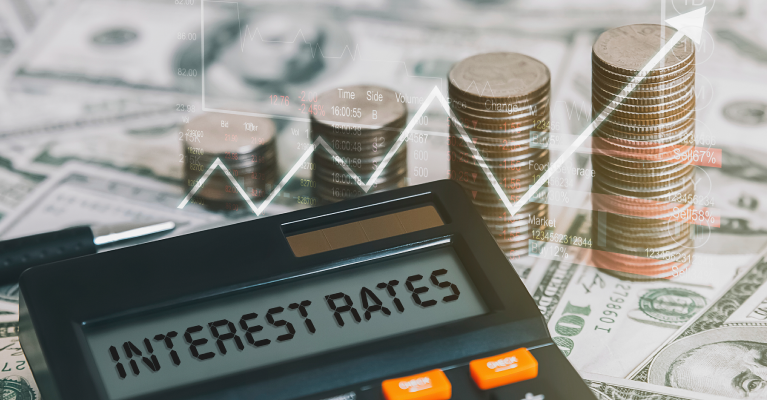Is yield too much to ask for? In a low interest rate environment with tight credit spreads, the answer at a first glance seems to be yes. For those who are aware, yield is defined as the income return on your investments.
The current fixed income landscape has left investors in pursuit of yield for their cash on the sideline. When participating in the fixed income market, investors must tread carefully to find a solution that will offer a yield for their cash that justifies the risk.
Two of the biggest risks that investors face in the pursuit of yield in the fixed income market are interest rate and credit risk:
- Interest rate risk is the potential that a change in interest rates will reduce the value of a fixed-rate investment. When interest rates rise, fixed income securities prices typically fall.
- Credit risk is the possibility of a loss resulting from a fixed income security default. Defaults occur when the borrower fails to repay or meet their contractual obligation on their debt.
Now, let’s take a closer look at where we are currently in the fixed income environment as of the date of this article:
Where are interest rates?
Bond yields are near historic lows with the 10-year treasury benchmark currently offering 1.46% as of March 2021. With 10-year treasury yields this low, the expectation is that yields can only go up from here. When rates go up, the market price of existing fixed income securities usually drops to offset the more attractive rates of new issues coming out with higher rates.
Where are credit spreads?
A credit spread is the difference in yield between a U.S. Treasury bond and another debt security of the same time horizon but different credit quality. (Treasury bonds carry the full backing of the U.S. government and are widely viewed as the safest investment.) Credit spreads are used to determine the riskiness of a bond and at this juncture these spreads are priced to perfection and are at pre-pandemic levels.
Historically, investors have been able to avoid taking on interest rate risk and credit risk by locking in a decent yield through a Certificate of Deposit (CD) account or a high yield money market fund.
However, housing cash in these vehicles with the sub 1% yield offered by the broad marketplace has created an opportunity cost for many investors. Hence, understanding the backdrop of the fixed income market has become important and many clients have asked us, “What investment strategies do you recommend for idle funds with spreads so tight and interest rates that are so low?”
It is important to consider these things when considering such strategies:
- Short Duration: To help mitigate the risk of rising rates, think in the short term. A short-duration strategy is where a fixed-income investor is focused on buying bonds with a low duration, i.e. the strategy is focused on bonds with a short amount of time to maturity. Strategies that invest in debt classes like Asset Backed Securities (ABS) and Residential Mortgage Backed Securities (MBS), for example, can potentially offer short duration.
- High Credit Quality: Look for high credit quality securities. High credit quality securities, simply put, are debt instruments that exhibit the highest levels of creditworthiness. An example of high credit quality security is a corporate bond that is issued by a company with solid fundamentals and cash flow-generating abilities to pay down its debt.
- Active and Tactical: To successfully navigate the current fixed income environment, one should consider working with an advisor who understands the market dynamics and can actively manage choices around duration, sectors and credit, as well as yield curve positioning to help you meet your goals.
When it comes to growing the value of your cash, investors should consider how it is being deployed in the current market environment.

Helping you boost your financial intelligence.
Read our financial resources from your friends at WSFS.




